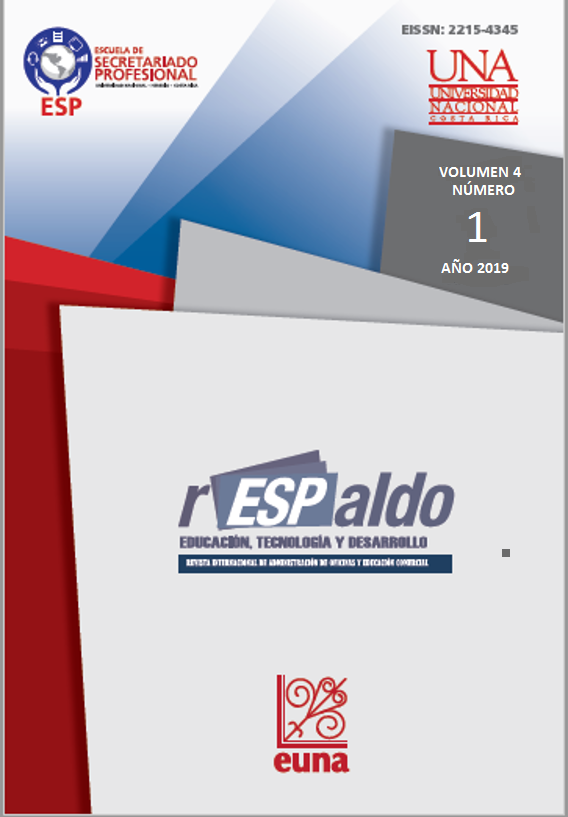Qualitative Study Parametodology to Analyze the Congruence Between Syllabus and its Implementation: Case Study of the Career of Commercial Education of the National University
DOI:
https://doi.org/10.15359/respaldo.4-1.1Keywords:
Curriculum design, Commercial Education, passive observation, pedagogical approach, secretary teaching.Abstract
The article proposes a methodology, and puts it into practice through a case study, to analyze the connection between the syllabus and its implementation
in the Commercial Education Undergraduate Program at Universidad Nacional. This research study provides a methodology that could be implemented in other similar studies due to the chosen variables, and the data collection instruments applied; such as, a structured interview, passive observation, and a gap qualitative analysis. Therefore, this provides decision-making strategies regarding the aspects to be considered when improving the connection between the syllabus and what the teachers develop in the classroom. The study highlights the strong connection between curriculum design and its application in the classroom. Product of the proposed methodology and the analysis generated, it is recommended that professors be provided with curriculum training specifics to facilitate experience exchanges. It is also suggested that gathering spaces be created to enhance shared publications on topics of mutual interest.
Downloads
Published
How to Cite
Issue
Section
License
 Revista Internacional rESPaldo en Administración de Oficinas y Educación Comercial de la Escuela de Secretariado Profesional de la Universidad Nacional de Costa Rica es publicada bajo la licencia Creative Commons Reconocimiento-NoComercial-SinObraDerivada 3.0 Costa Rica License.
Revista Internacional rESPaldo en Administración de Oficinas y Educación Comercial de la Escuela de Secretariado Profesional de la Universidad Nacional de Costa Rica es publicada bajo la licencia Creative Commons Reconocimiento-NoComercial-SinObraDerivada 3.0 Costa Rica License.Permisos que sobrepasen el ámbito de esta lincencia, pueden ser consultados en secretariado@una.cr







